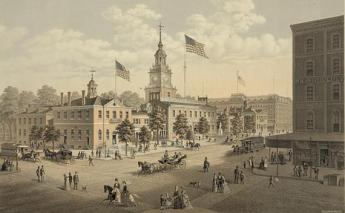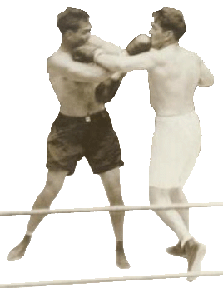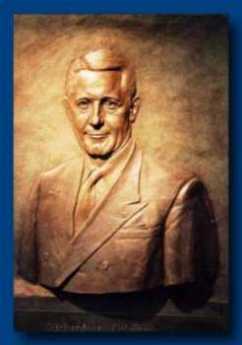Related Topics
Downtown
A discussion about downtown area in Philadelphia and connections from today with its historical past.

North of Market
The term once referred to the Quaker district along Arch Street, and then to a larger district that had its heyday after the Civil War, industrialized, declined, and is now our worst urban problem area.
Sights to See: The Outer Ring
There are many interesting places to visit in the exurban ring beyond Philadelphia, linked to the city by history rather than commerce.
Montgomery and Bucks Counties
The Philadelphia metropolitan region has five Pennsylvania counties, four New Jersey counties, one northern county in the state of Delaware. Here are the four Pennsylvania suburban ones.
Broad Street North and South
Following the instructions of William Penn, all of Philadelphia's original numbered streets are laid out by the compass, due North and South. Without getting into a history of how the street names then got modified somewhat, Broad Street by the present system would be 14th Street. Center Square of the original five parks is placed at the intersection of Broad and Market Streets. After a period functioning as the city water-works, the intersection has been occupied by City Hall for over a century. Originally intended to be the tallest building in the world, the tower of City Hall still dominates the landscape in all four directions for a considerable distance. It also stands at the foot of the diagonal Benjamin Franklin Parkway, so City Hall stands like a Parisian intersection rather than the Scotch Irish Diamond it once was. Nevertheless, when you look down the long canyon of each intersecting street, the tower in the middle of the street dominates the view. Let's begin a tour of the whole extent of the longest street in Philadelphia, at the southernmost end of Broad Street, at the Philadelphia Navy Yard.

|
| Gene Tunney vs Jack Dempsey |
Although the guard will be happy to tell you it's a dumb regulation, you aren't allowed to take pictures of the Navy Yard, or visit without a pass, in spite of the fact the area of the yard is fast being converted into business properties. A great many of the warships that won our wars were built in this yard, and many rests in a sort of floating Navy graveyard, or mothball fleet, which is best seen from the elevated highway nearby, Interstate 95. The shipyards rest on the filled-in area around Hog Island, home of the hoagie sandwich. Just north of the Navy Yard are several sports stadiums and a great deal of parking space to service them. Much muttering is heard about the tax cost of this stadium farm, whose many-million-dollar facilities are only used for between eight and eighty home games apiece each year. The stadium-sprouting process began with Municipal Stadium which was built for the Dempsey Tunney prize fight, and held 110,000 spectators. In the time it housed the annual Army-Navy football game, but not much else, and has since been demolished. It certainly seemed to be the windiest, coldest place on earth, but that's just a child's recollection. At that time and for many years the area around the stadium was one huge garbage dump, and before that it was a huge swamp, the source of mosquitoes, malaria, typhoid and yellow fever. Fish like to eat mosquitoes, so filling in the South Philadelphia swamp badly injured the seafood industry of Delaware Bay, while admittedly ridding us of Yellow Fever epidemics. The swamp once extended as far as Gray's Ferry where the University of Pennsylvania now looms, with patches of quite rich farmland scattered in the swamp. Stephen Girard had a large farm just to the West of what is now South Broad Street where he cultivated vegetables necessary for the French cooking he favored.

|
| Mayor Richardson Dilworth |
As you drive north on Broad you begin to notice the quaint Philadelphia custom of parking your car in the center of the wide street. Mayor Dilworth once announced this had to stop, but the uproar from local residents forced even this ex-Marine officer to retreat. Down the side-streets a variation is seen; when the local resident drives off, he leaves trash cans in the street, indicating it is private property. Rumor has it that people who ignore the warning can get their windshields smashed with a brick. This area is as urbanized as you can get, but the spirit of the wild, wild West nevertheless prevails.
Originally published: Saturday, May 03, 2008; most-recently modified: Wednesday, May 15, 2019
| Posted by: friends | Oct 20, 2010 3:44 PM |
BuddySergeant@aol.com
PS Dont know? Thanks LOL
| Posted by: Gus Galiano | Jan 10, 2009 8:31 AM |